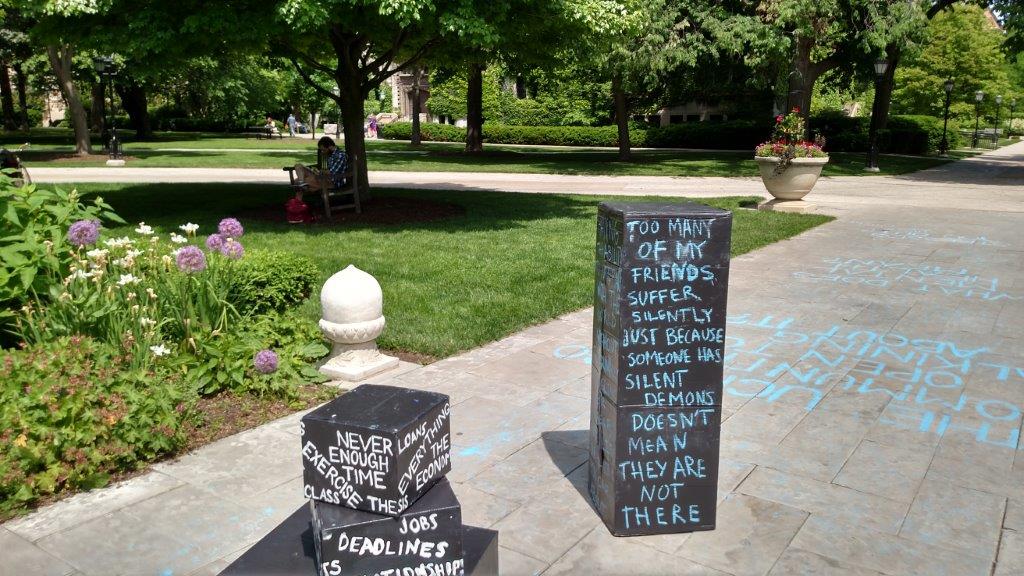 Youth suicide is never far from the American imagination. It is featured regularly in sensationalistic media coverage, as well as in books, plays, movies, and TV shows. In some ways, suicide occupies a similar space in the sociological imagination. Durkheim’s Suicide was one of the foundational texts of our discipline, and his influence, on sociology and the scientific study of suicide (or “suicidology”), is still recognized today; particularly, Durkheim’s insight that suicide is deeply tied to social isolation. Yet, at the same time, since 1980, sociologists have contributed dramatically fewer papers on suicide than nearly every other discipline, essentially ceding knowledge construction to psychology, psychiatry, and epidemiology. Perhaps more importantly, when we do contribute knowledge, we are largely re-testing Durkheim’s theses rather than pushing analyses forward by (1) drawing on our diverse methodological and theoretical toolkit and (2) focusing on the social problems of today, rather than those from Durkheim’s era. Nowhere is the lack of a sociological perspective on suicide more problematic than when considering suicide among children and youth. First, suicide among youth represents a major social problem. Though the rise in suicide deaths among middle-aged white men has received substantial attention, the group with the second largest increase in suicide is youth ages 10-25. According to the Centers for Disease Control and Prevention (CDC), from 1999 to 2014, suicide has increased about 200 percent among girls ages 10-14 and 36 percent among boys ages 10-14. Youth ages 15-24 are also demonstrating substantial and significant increases in suicide. Among girls ages 15-24, the rate has increased approximately 53 percent since 1999; among boys ages 15-24, the increase is smaller (only 8 percent), but still statistically significant. To drive home the magnitude of these changes, according to a CDC Morbidity and Mortality Weekly Report from August 2017, the suicide rate for females ages 15-19 is now at a 40-year high. On top of these trends by gender, Native American and Alaska Native youth ages 15-34 have one of the highest suicide rates in the U.S. (31 per 100,000 according to the CDC, using 2012 data), which is 2.5 times higher than the national average for that age group. Though rates of suicide ideation, plans and attempts (also called “suicidality”) have not changed as dramatically as rates of suicide deaths (an interesting trend in and of itself), a brief review reveals that though suicide deaths are rare, suicidality is not. For example, according to the Youth Risk Behavior Survey of U.S. high school students, 25.6 percent of Latina girls, 22.8 percent of white girls, and 18.7 percent of black girls seriously contemplated suicide in the past 12 months. Latina girls also have the highest prevalence of suicide attempts with 15 percent reporting a suicide attempt in the past year, compared to 9.8 percent of white girls and 10.2 percent of black girls. Though in the U.S., boys report suicidality at lower rates than girls (and have suicide deaths at higher rates), a sizeable minority of boys report suicide ideation (around 12 percent), with much less variation between race/ethnic groups. Additionally, research indicates that suicide is more prevalent in disadvantaged neighborhoods and among poor youth. These demographics clearly indicate that suicide is an important social problem among youth that warrants sociological attention. The second reason that youth suicide warrants more research attention from sociologists is that social forces likely play a particularly important role because of youth’s developmental sensitivity to social pressures. Indeed, many of the top concerns around suicide in youth involve inherently social experiences. In addition to concerns about suicide clusters or suicide diffusion, substantial attention is being paid to the roles of social media and bullying in youth suicide and to TV shows like 13 Reasons Why. And yet, research has barely scratched the surface of how and why these social forces may matter. With regard to shows like 13 Reasons Why, many suicidologists and psychologists have cautioned that the show could encourage suicide as an option for youth, but in truth, very little empirical research explicitly examines how exposure to suicide via salient role models shapes youth’s vulnerability to suicide. (For my take on 13 Reasons Why, check out this essay.) This is where my own work, with my colleague Dr. Seth Abrutyn (University of British Columbia) comes in. Using both quantitative and qualitative data, the goal of our research is to better understand how youth cope with and make sense of suicide after exposure to the suicide death or attempt of a classmate or friend. In brief, we have found that exposure to suicide can change whether youth see suicide as a justifiable action that someone like them might do to escape a certain set of circumstances. We also find clear evidence that suicide in adolescence has social roots. In our qualitative case study of a community with a substantial and enduring suicide problem including repeated suicide clusters, we illustrate how social pressures amplify youth’s misery and diminish their willingness to seek help for their psychological pain. When combined with repeated exposure to the suicides of classmates, this ultimately reifies suicide as an option, or perhaps as the option, for escape. Undoubtedly, the causes of suicide are complex and multifaceted and involve the intermingling of biological, social, environmental, and psychological risk and protective factors. But sociology is uniquely situated to shed light on how social forces and environmental factors condition biological risk, cause psychological pain, and ultimately shape suicide. As such, it is imperative that sociologists, and particularly sociologists of children and youth, return to studying this important and pressing social problem. Anna S. Mueller is a sociologist and an assistant professor in the Department of Comparative Human Development and the College at the University of Chicago. Her research on adolescent suicide won the Outstanding Scholarly Contribution Awards from the Section on Children & Youth in 2015 and 2017. For more about her research, visit www.annasmueller.com Comments are closed.
|
ContactSection on Children and Youth Categories
All
Archives
May 2020
.
|

